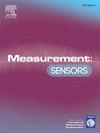Image sensor fusion for multimodal biometric recognition in mobile devices
Q4 Engineering
引用次数: 0
Abstract
Aim
Multimodal biometric recognition authenticates or identifies someone using various biometric features or modalities. Multimodal biometric systems use different biometric qualities to improve the recognition process's accuracy, security, and reliability rather than depending solely on one biometric property, such as fingerprint or facial recognition. Sensor fusion techniques can merge data from several biometric sensors, including fingerprint scanners and facial recognition cameras, to boost the accuracy and dependability of biometric authentication in the context of multimodal biometric recognition in mobile devices. The process of combining data from numerous image sensors to enhance a system's overall performance is known as image sensor fusion.
Challenges
Challenges includeintegration difficulties in achieving accurate and secure multimodal biometric recognition on mobile devices. The study goal was Image sensor fusion for multimodal biometric recognition in mobile devices.
Methodology
The study uses a specially made database of 450 face photos roughly 450 fingerprints.Weiner filter (WF) is used for preparing data. Battle Royale optimized with deep convolutional neural network (BRO-DCNN) is proposed to improve the overall performance of fingerprint and facial information.
Findings
Accuracy, sensitivity, specificity, and precision are used to measure the effectiveness of the proposed BRO-DCNN system. Study results show that BRO-MLANN solves the many characteristics of smart cities and is an efficient approach compared to other current methods in recognition rate, 98 % accuracy, 99 % precision, 96 % specificity, and 94 % sensitivity.
图像传感器融合用于移动设备中的多模态生物识别
多模态生物识别利用各种生物识别特征或模式来验证或识别某人。多模态生物识别系统使用不同的生物特征来提高识别过程的准确性、安全性和可靠性,而不是仅仅依赖一种生物特征,如指纹或面部识别。在移动设备的多模式生物识别中,传感器融合技术可以合并来自多个生物识别传感器(包括指纹扫描仪和面部识别相机)的数据,从而提高生物识别认证的准确性和可靠性。挑战挑战包括在移动设备上实现准确、安全的多模态生物识别的集成困难。研究目标是在移动设备上实现多模态生物识别的图像传感器融合。研究方法该研究使用了一个专门制作的数据库,其中包含 450 张人脸照片和 450 个指纹。研究结果用准确度、灵敏度、特异性和精确度来衡量所建议的 BRO-DCNN 系统的有效性。研究结果表明,BRO-MLANN 解决了智慧城市的诸多特点,与其他现有方法相比,在识别率、准确率、精确率、特异性和灵敏度方面,BRO-MLANN 是一种高效的方法,准确率为 98%,精确率为 99%,特异性为 96%,灵敏度为 94%。
本文章由计算机程序翻译,如有差异,请以英文原文为准。
求助全文
约1分钟内获得全文
求助全文
来源期刊

Measurement Sensors
Engineering-Industrial and Manufacturing Engineering
CiteScore
3.10
自引率
0.00%
发文量
184
审稿时长
56 days
 求助内容:
求助内容: 应助结果提醒方式:
应助结果提醒方式:


